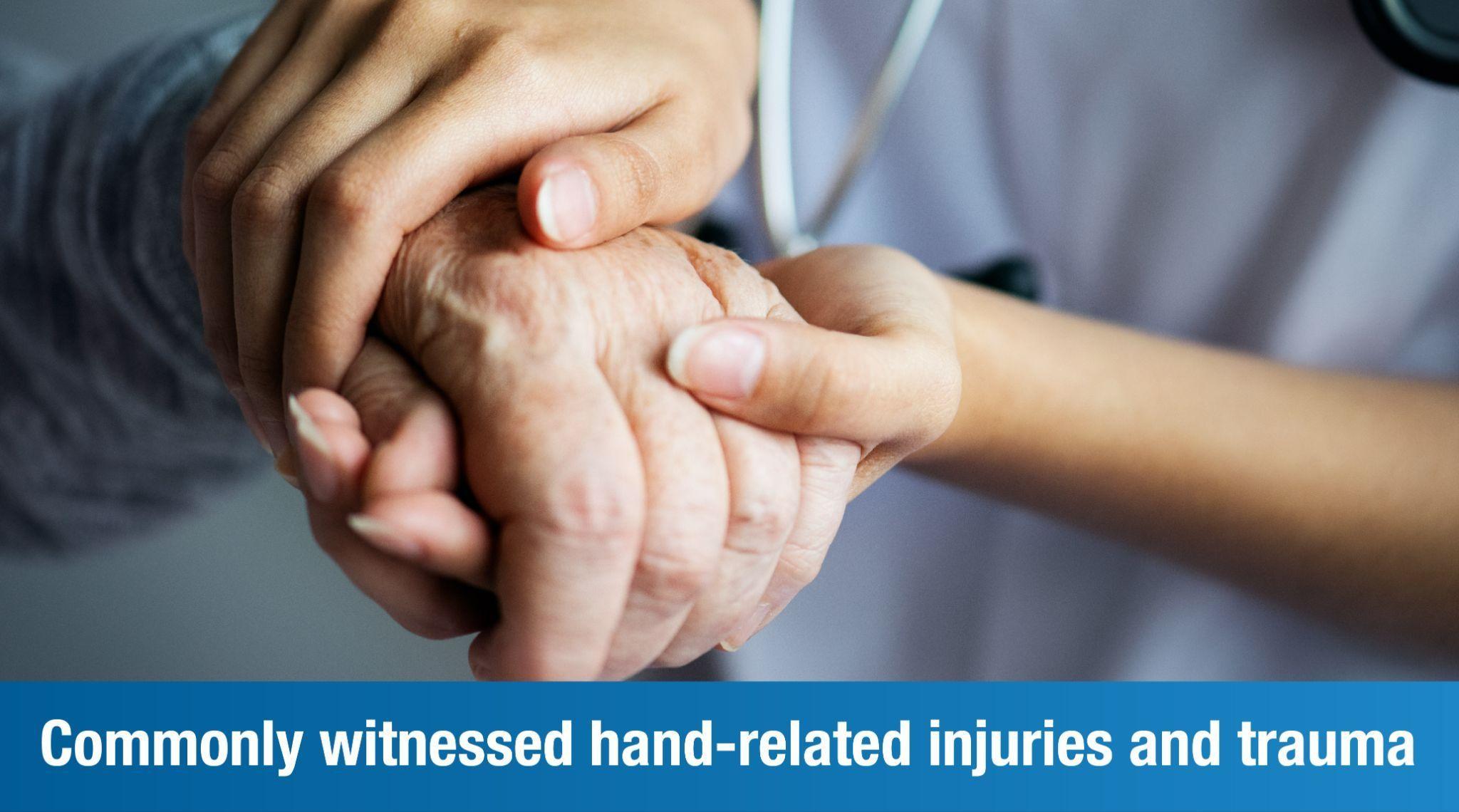
Immanuel Kant
Much of our everyday learning is through sensory experiences and conscious tactile explorations offered by our hands. While a little bit of wear and tear is natural when it comes to our hands, there are severely damaging injuries and trauma that can impact function and ability.

Let’s dive into them.
The hand is the visible part of the brain. -
What is a hand injury?
Any form of trauma or injury that impacts the correct functioning of hands, wrists, or fingers is referred to as ‘hand injury’.
Leaving aside simple cuts and surface burns (common kitchen injuries), severe injuries include the kinds that affect the nerves in the hands
For complete recovery, hand injuries need immediate care and quick treatment.

Types of hand injuries and their symptoms
Abrasions: Scraping away of skin due to contact with rough surface leading to some skin loss; less blood loss
Symptoms: Pain, redness, local swelling or redness, rash

Lacerations: Deep cuts to hands from a sharp object resulting in blood loss; needs cleaning and disinfecting; some cuts may require stitches too
Symptoms: Tenderness, numbness, bleeding, decreased range of motion, weakness, pale skin (from blood loss)
Burns: Caused by heat, chemical or electrical sources; first degree burns are mild and can be managed with topical ointments; second and third degree burns are serious, can cause extensive nerve damage, and can be life threatening
Symptoms: Deformity, discolouration, complete numbness, blisters, redness, change in skin texture, loss of tissue, area(s) surrounding injury become black
Bone dislocations and fractures: trauma to bones and joints
Symptoms: Swelling, discolouration, deformity, tenderness, weakness, bleeding
Types of hand injuries and their symptoms
Soft tissue injury: Include sprains, strains, bruises, tendonitis, and stress injuries; impact tendons and ligaments
Symptoms: Deformity, local tenderness, weakness, bleeding, swelling, discolouration
Infections: Occur due to untreated or wrongly treated wounds, exposure to toxins; early treatment may involve antibiotics
Symptoms: Local warmth, redness, fever, deformity, swelling, tenderness
*If untreated, infections can cause severe damage to the hand, and may need tissue removal and draining of accumulated pus.
High pressure infection injuries: Caused by tools like tattoo or paint guns; affects the dominant hand
Symptoms: Small sore at the point of injury, pain, swelling, occasional discolouration
Amputations: Caused by serious injuries, infection, disease
Symptoms: Pain, numbness, slow healing or non-healing of injury, gangrene, absent or weakened pulse in the limb

Causes of hand injury

Accidents while performing daily activities, such as cuts and burns
cooking
Impact or injury from sporting activities
Road accidents
Wear
●
while
●
●
●
and tear from ageing or from poor muscle use during weightlifting
● Use of heavy machinery or equipment
Treatment and care
A tailored rehabilitation program is imperative for swift treatment of hand injuries. Your doctor/therapist will be able to ascertain the degree of damage or injury and devise a treatment plan accordingly. In order to minimise pain, strengthen muscle tone, and restore functionality, the patient may be prescribed:
● Exercises to improve range of motion, strength, and dexterity
● Scar tissue management
● Therapeutic modalities for joint/muscle stiffness
● Compression therapy and edema management
● Custom orthotics to support the hand after the injury or to correct a deformity
● Training for the use of prosthetics or assistive devices
● Energy conservation training



